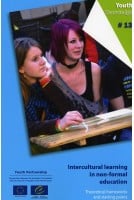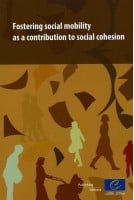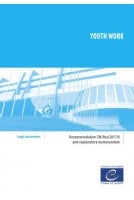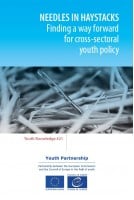



How do we involve less advantaged young people in mobility projects, and how do we engineer and implement these projects to make participation a realistic option for all?
This book presents the state of the art of learning mobility in the very complex and heterogeneous European youth field, bringing together contributions from all over the continent. The authors present empirical research findings that explore and analyse the experience of participants from a range of different backgrounds, in varied learning mobility settings – exchanges, volunteer service, camps – and in diverse regions of Europe.
This volume addresses two interrelated questions: first, how learning mobility can be used as a tool for inclusion, providing disadvantaged and excluded people with opportunities and assets; and second, how focusing on inclusion can become a more intrinsic part of learning mobility projects and initiatives. The book is divided into three parts, spanning the range of stages and dimensions of the learning mobility process: access, reach and target; processes, strategies and practices; and effects, outcomes and follow-ups.
Relevant for those with experience but also directed to newcomers to the field, this work provides an explanation of the main concepts and issues in the light of current developments in youth policy and practice in Europe.
Introduction
Maurice Devlin, Søren Kristensen, Ewa Krzaklewska and Magda Nico
Learning mobility, social inclusion and non-formal education: understanding the concepts
Maurice Devlin, Søren Kristensen, Ewa Krzaklewska and Magda Nico
Part I — Acc ess, reach and target
1. Analytical paper: Learning mobility and social inclusion
David Cairns
2. Historical antecedents to contemporary European youth learning mobility policy
Charles Berg
3. Ambivalences and ambiguities of learning mobility and social inclusion in non-formal youth work
Beatrix Niemeyer
4. Going abroad in order to cope: a capacity-building experience with little support from institutions
Francine Labadie and Clotilde Talleu
Part II — Processes, strategies and practices
5. The pedagogical approach of the Anholt projects: an innovative European perspective on learning-to-learn mobility projects? Reflections and discussion
Karen Bjerg Petersen
6. Learning mobility, social inclusion and flexible education pathways in Malta
Miriam Teuma
7. ExchangeAbility: an inclusive practice within the youth field
Agnes Sarolta Fazekas
8. International learning mobility activities for mixed abilities groups: from competencies to inclusiveness
Adina Marina Serban and Elif Serbest
9. Empowering dyslexic students through mobility
Andrei Azzopardi, Sasha Bilocca, Ruth Falzon, Valentina Farrugia, Mary Rose Formosa, Michael Formosa, Leah Gatt, Suzanne Gatt, Shaun McAlister and Kurt Mizzi
Part III — Effects, outcomes and follow-ups
10. Do international inclusion projects work? Yes
Tony Geudens, Wolfgang Hagleitner, Francine Labadie and Frank Stevens
11. The German IdA programme: inclusion through learning mobility
Peter Wordelmann
12. European Voluntary Service with the Eastern Europe and Caucasus region as a tool for social inclusion of young people
Marzena Ples
13. “I have a diploma, now I need a Youthpass”: European Voluntary Service as a shortcut to employment?
Özgehan Şenyuva and Susie G Nicodemi
About the authors and editors















How do we involve less advantaged young people in mobility projects, and how do we engineer and implement these projects to make participation a realistic option for all?
This book presents the state of the art of learning mobility in the very complex and heterogeneous European youth field, bringing together contributions from all over the continent. The authors present empirical research findings that explore and analyse the experience of participants from a range of different backgrounds, in varied learning mobility settings – exchanges, volunteer service, camps – and in diverse regions of Europe.
This volume addresses two interrelated questions: first, how learning mobility can be used as a tool for inclusion, providing disadvantaged and excluded people with opportunities and assets; and second, how focusing on inclusion can become a more intrinsic part of learning mobility projects and initiatives. The book is divided into three parts, spanning the range of stages and dimensions of the learning mobility process: access, reach and target; processes, strategies and practices; and effects, outcomes and follow-ups.
Relevant for those with experience but also directed to newcomers to the field, this work provides an explanation of the main concepts and issues in the light of current developments in youth policy and practice in Europe.
Please note that in accordance with our terms & conditions, PDF/epubs may only be purchased by private individuals.
